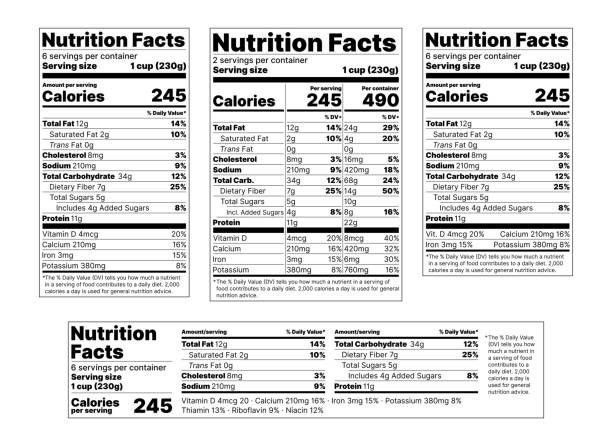Why Read Food Labels?
- Tips From Pips

- Aug 25, 2023
- 2 min read
Updated: Aug 19, 2024
Why Read Food Labels?

Reading food labels can be intimidating and overwhelming, but it is essential for maintaining a healthy lifestyle. Knowing what ingredients are in your food and how they affect your body is key to understanding how to make the best nutritional choices.

When reading a food label, the first thing you should look for is the serving size and number of servings per container. This information is provided at the top of the label and is important for understanding the nutritional content of the food. It is also important to note that the percentages listed are based on a daily value, so it is important to adjust your intake accordingly.

Next, you should look at the calorie content. This will give you an idea of the amount of energy that is provided by the food. The calorie content is typically broken down into calories from fat, carbohydrates, and protein. It is important to note that not all calories are created equal and that some may have a higher nutritional value than others.

The next section to look at is the macro-nutrients. This includes fats, carbohydrates, and proteins. Each macro-nutrient provides a different type of energy and helps to build and maintain our bodies. Fats are generally divided into saturated and unsaturated. Saturated fats are typically found in animal products like butter and cheese, and can increase cholesterol levels. Unsaturated fats, on the other hand, are typically found in plant sources, such as nuts and avocados, and can help to maintain healthy cholesterol levels.
Carbohydrates are the body's main source of energy and can be divided into simple and complex carbs. Simple carbs are found in processed and refined foods, such as white bread and cookies. Complex carbs, on the other hand, are found in whole grains, fruits, and vegetables and provide more nutritional value.

Fiber is an important part of a healthy diet and can be found in whole grains, fruits, and vegetables. Fiber helps to regulate the digestive system, maintain blood sugar levels, and reduce the risk of certain diseases.
Net carbs are the total amount of carbohydrates minus the amount of fiber. This is important to note if you are following a low-carb diet.

Finally, the label should include a list of ingredients. This is important for understanding what is actually in the food, as well as for identifying potential allergens.
Reading food labels is an essential part of maintaining a healthy lifestyle. By understanding the differences between carbs, fiber, net carbs, saturated and non-saturated fats, you can make the best dietary choices for your body. The key is to look for foods with a high nutritional value, such as whole grains, fruits, and vegetables, and to limit your intake of processed and refined foods.
The more you read, learn and absorb the more you know what to put in your body to keep you happy and healthy!







Comments